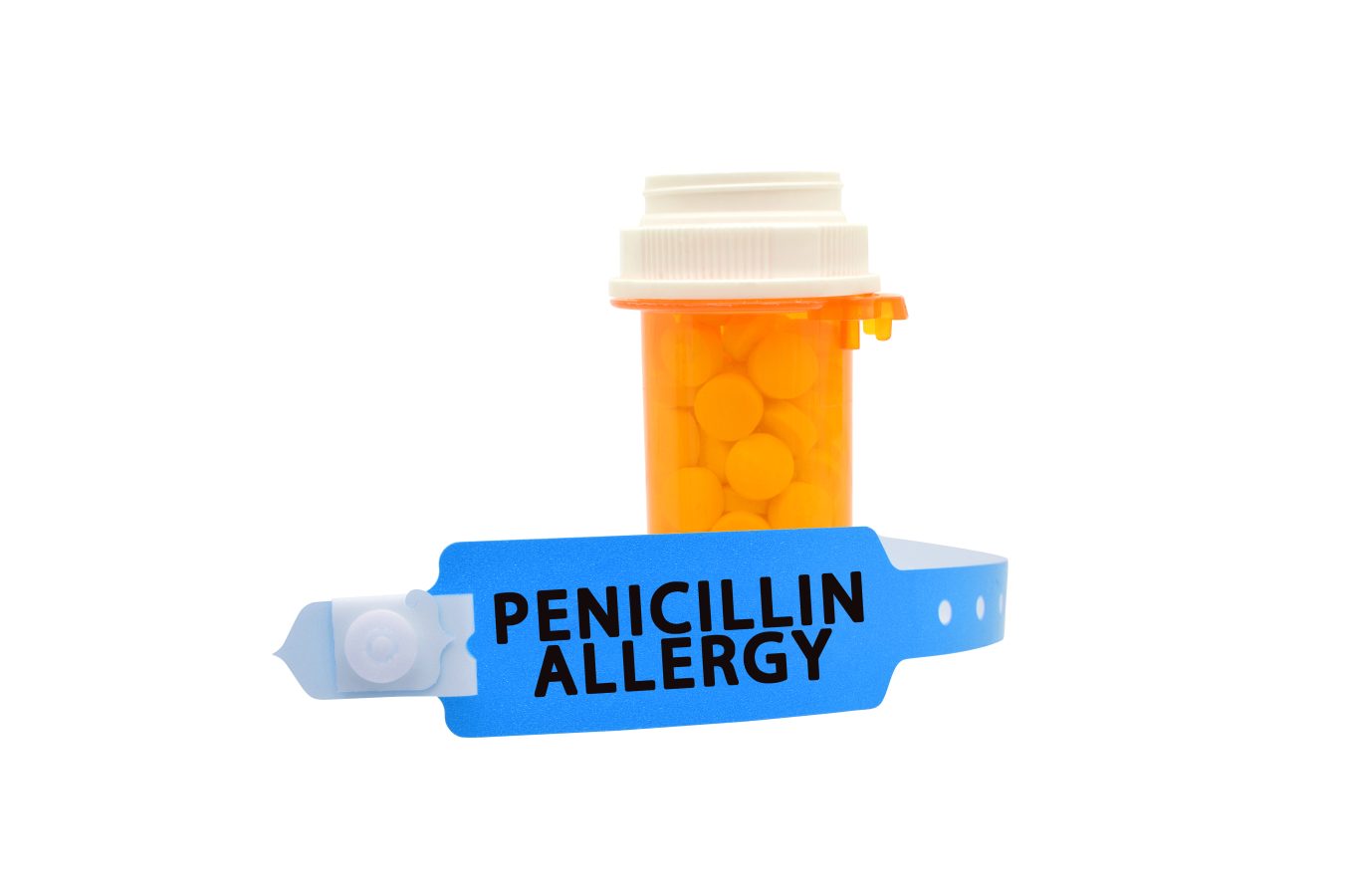
When your doctor diagnoses a sinus or other infection, usually in most instances, antibiotics will be prescribed. Penicillin is one of the oldest antibiotic medicines, and at one time, it was used for all infections, from a leg wounded in battle to pneumonia and everything in between. Bacterial resistance has limited its utility and today, the number of antibiotics could fill an encyclopedia! Unfortunately, allergies and suspected-allergies to penicillin are also quite common. It’s possible to be allergic to all kinds of penicillin or simply to certain types of it, such as amoxicillin or ampicillin. According to the CDC, 10% of the population believes they are allergic to penicillin-class antibiotics. However, only 1% are truly allergic.
What are the symptoms of a penicillin allergy?
Common symptoms of penicillin allergy include shortness of breath, wheezing, chest tightness, swelling of the throat or tongue, hives, flushing, itchiness, nausea, vomiting, and, diarrhea. Penicillin allergies can range from mild to severe and life-threatening.
Should I get tested for penicillin allergy?
If you’ve ever had a reaction to penicillin, you could be at risk of suffering similar – or worse – reactions in the future. The benefit of getting tested for an allergy is that you’ll know, one way or the other, whether you can take penicillin in the future. Imagine having to avoid the best (or only) drug that works for an infection and not really needing to avoid it.
How is testing for penicillin allergy conducted?
First, small and then higher doses of penicillin are applied to the skin with a “skin test”, provoking a controlled hive in patients that are allergic. If there is no reaction to this, small and then higher doses of penicillin are applied under the skin, with the same reaction of a hive in patients that are allergic. If this does not cause a reaction, a full dose of one of the penicillin-class drugs is ingested by the patient and the patient is observed for several hours.
What are the side effects of penicillin allergy testing?
Usually just hives or a little temporary skin irritation where the test occurred. Rarely, anaphylaxis (see above) can occur but since the exposure starts low and increases slowly, it is not as likely as having a less significant allergic reaction. Most of the time, I un-diagnose penicillin allergy, so typically nothing happens.
How long does it take to be penicillin allergy testing?
Two days for 3 hours or one long session. My preference is the two sessions, but in emergency situations, the long session is used. The first involves skin prick and intradermal testing to first low, then increasing doses of penicillin and the second test is an oral drug challenge.
Can other drugs be tested?
Yes, there is a protocol for just about every drug. That said, penicillin testing is the only one that is FDA-approved, more because drug companies do not choose to go through the expense and effort to have their drugs for the purpose of testing for allergy.
Alternatives
If you’re truly allergic to penicillin, in most instances there should be other antibiotic medication that works just as well. Avoidance is best if you do not know for certain.
If you are allergic and a penicillin-type medication is the only one that will work, desensitization to penicillin will also work.
What is penicillin desensitization?
If penicillin is the only drug you can take, desensitization can be used to help you complete a course of a penicillin-class antibiotic. This means being administered penicillin, first in very small doses and increasing approximately every 20 minutes, until the full dose is being administered.
What is the disadvantage of penicillin desensitization?
Once the penicillin is being administered at full dose, it needs to be taken regularly to maintain the desensitization. Therefore, the desensitization only works well until the course of penicillin is complete. Once the course is complete and the patient has not taken penicillin in a while, the effect of the desensitization (ability to take penicillin without a reaction) is gone and the patient may have anaphylaxis when trying to use penicillin.
Call 480-500-1902 or request an appointment at https://relieveallergyaz.com/contact now! Begin your allergy testing journey with Dr. Wendt at Relieve Allergy in Scottsdale, Arizona—It’s time to take care of yourself!
Learn more about Dr. Wendt and Relieve Allergy Asthma & Hives at www.relieveallergyaz.com or connect with us: https://www.facebook.com/RelieveAllergy/, https://www.linkedin.com/in/julie-wendt/, https://x.com/RelieveAllergy, https://www.instagram.com/relieve_allergy/ or https://www.youtube.com/@JulieWendt-qx7jm. Did you know? Dr. Wendt wrote the book on allergies. Buy it at: https://geni.us/WhatsEatingOurKids
Relieve Allergy Asthma & Hives is located near Kierland Commons, 21803 N. Scottsdale Road Ste. 200, and has convenient evening and morning hours to accommodate your schedule. Dr. Wendt is also available for telemedicine appointments as appropriate. Most insurance plans are accepted.
DISCLAIMER: This blog is not meant to substitute for medical care by an Allergist-Immunologist nor is it intended to provide medical advice or imply a Physician-Patient relationship with its readers or their family. It is intended to provide guidance, direction, and moral support from someone experienced in testing and treating allergies. This is also not meant to be a “do-it-yourself” manual or a “how to” overcome your allergies. Some of the issues mentioned, whether allergic or look-a-like, can be dangerous or if left unchecked, deadly. Please develop a relationship with a Physician you trust to help you with diagnosis, advice, questions, and treatment regarding your and your family’s medical conditions.
Share this post. Choose your platform:
Search Blog & Pages
Recent Posts

